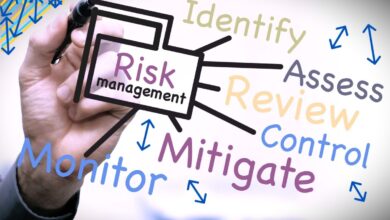The Role of IoT in Modern Product Inspection

In the landscape of manufacturing, the Internet of Things (IoT) is redefining product inspection and quality control, marking a significant shift in the industry toward what is commonly referred to as Industry 4.0. The integration of IoT into product inspection offers numerous advantages and addresses several challenges, yet it also presents certain complexities that manufacturers need to navigate.
-
Advantages of IoT in Product Inspection
- Real-Time Monitoring and Data Collection: IoT enables continuous, real-time monitoring and data collection across the production process. This shift from periodic to continuous monitoring facilitates proactive identification and resolution of quality issues, reducing errors and enhancing overall production quality.
- Operational Efficiency: By integrating IoT sensors and devices into the production process, manufacturers gain invaluable insights into their operations. Real-time data analysis helps in identifying patterns and anomalies, allowing for more informed decision-making and process optimization.
- Enhanced Quality Control: IoT sensors, deployed at critical production points, monitor product quality in real time. This immediate defect detection and prevention enhances the consistency and accuracy of the manufacturing process.
- Supply Chain Optimization: IoT extends its benefits to the entire supply chain, enabling real-time inventory tracking, demand forecasting, and streamlined logistics, thus improving order fulfillment and customer satisfaction.
- Cost Reduction: IoT aids in energy efficiency, labor cost optimization, and minimization of waste, contributing to overall cost reduction in manufacturing operations.
- Increased Safety: IoT technologies enhance workplace safety by monitoring conditions and ensuring equipment operates within safe parameters, thus preventing accidents.
-
Techniques and Tools Enabled by IoT
- Automated Visual Inspection: IoT-enabled cameras and machine vision systems enhance the accuracy and speed of quality control in China, with machine learning algorithms aiding in defect detection.
- RFID and Barcode Scanning: These technologies improve traceability and quality control, ensuring real-time tracking and authentication of components.
- Automated Data Analytics: IoT’s capacity to generate substantial data is leveraged through automated analytics tools, which process this data to identify trends and predict quality-related issues.
- Remote Monitoring and Control: IoT enables remote quality control and global production management, allowing for immediate intervention in case of quality issues.
-
Challenges in IoT Implementation
- Legacy Equipment Integration: Many manufacturing facilities operate with equipment predating the IoT era. Retrofitting these machines with IoT capabilities ensures seamless integration into modern quality control processes.
- Technical Expertise: The development and management of IoT infrastructure require specialized knowledge, often necessitating collaboration with experienced IoT vendors or consultants.
- Data Security and Privacy: Protecting sensitive data against breaches and ensuring compliance with regulatory requirements like GDPR is crucial in IoT-driven environments.
- Integration of Disparate Systems: Manufacturing environments often feature diverse data sources and systems. Adopting standardized IoT communication protocols and data exchange formats is key to overcoming integration challenges.
- ROI Uncertainty: To mitigate uncertainties around ROI from IoT investments, starting with a small-scale pilot project focused on a high-impact use case can be effective.
Conclusion:
The integration of IoT into product inspection in Indonesia is transforming the manufacturing sector, enhancing quality control, operational efficiency, and safety, while also reducing costs. However, manufacturers must navigate the complexities associated with integrating this technology, including ensuring data security, managing legacy systems, and bridging technical knowledge gaps. The effective implementation of IoT in product inspection not only improves product quality but also positions manufacturers to thrive in an increasingly competitive and technologically advanced market.
FAQs:
What is the primary role of IoT in manufacturing inspection?
IoT primarily enhances real-time monitoring and data collection in manufacturing, enabling proactive issue resolution and improved quality control throughout the production process.
How does IoT contribute to operational efficiency in manufacturing?
IoT integrates sensors and devices into production, providing real-time insights that facilitate informed decision-making and optimization of manufacturing processes Online Business Center.
Can IoT technologies improve workplace safety in manufacturing facilities?
Yes, IoT technologies enhance safety by monitoring conditions and operating parameters, thereby preventing potential risks and accidents.
What are the challenges of integrating IoT into existing manufacturing systems?
Key challenges include retrofitting legacy equipment with IoT capabilities, bridging the technical knowledge gap, and ensuring data security and privacy.
How does IoT affect cost management in manufacturing?
IoT contributes to cost reduction by enhancing energy efficiency, optimizing labor costs, and minimizing waste and operational costs.
Is there a difference between remote monitoring and traditional quality control methods?
Remote monitoring, enabled by IoT, allows for quality inspections and assessments to be performed from a distance, offering flexibility and immediacy in quality control, unlike traditional methods.



